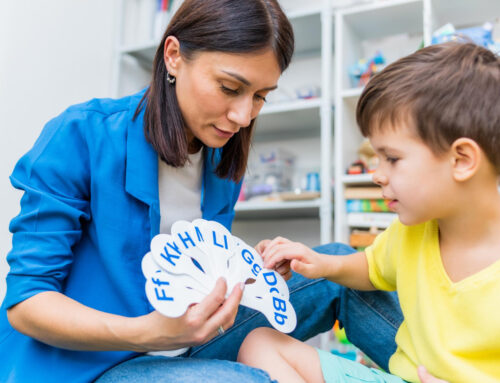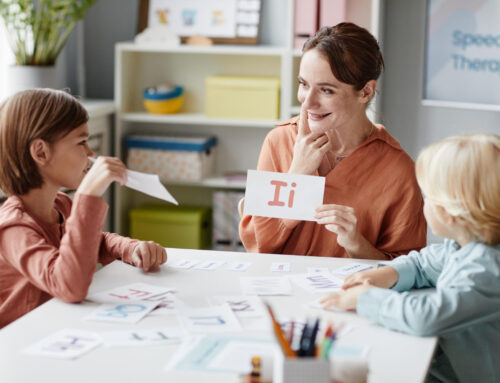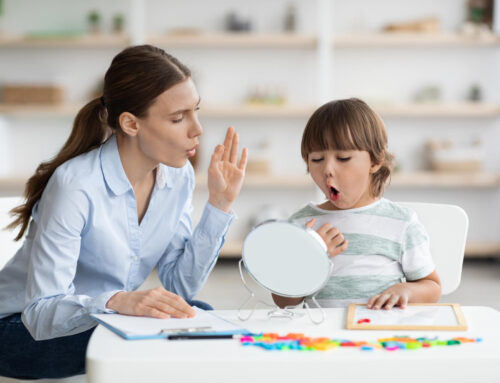Spatial awareness refers to comprehending your body’s positioning about the surrounding environment. This skill influences tasks ranging from picking up objects to navigating social contexts.
Every day, individuals navigate & engage with their environment. Essential to this is maintaining spatial awareness. But what does spatial awareness entail exactly?
Spatial awareness encompasses the capacity to perceive objects in space & understand one’s body position relative to them.
Understanding the significance of spatial awareness & identifying potential issues is crucial. Explore further as we delve into these matters & beyond.
Why Is It Important?
Spatial awareness enables individuals to be mindful of elements in their surroundings & their relative positions. This skill holds significance for various purposes, including:
- Location: Spatial awareness provides the context of an object’s position. For instance, distinguishing between a cup on a table versus under it.
- Movement: Possessing spatial awareness allows one to understand the movement of people & objects within a space, aiding in navigation.
- Social Dynamics: Spatial awareness plays a role in social interactions, such as respecting personal space boundaries.
- Language: A grasp of spatial concepts is essential for comprehending sentence structure & grammar.
- Mathematics: Some mathematical principles rely on spatial awareness, like geometry & numerical sequencing.
Spatial awareness is closely linked to another concept known as proprioception. Proprioception pertains to the conscious recognition of one’s body & limbs within the surrounding space.
For instance, when reaching across a table to pick up a pencil, proprioception guides the precise muscle movements required in your arm for that action. Simultaneously, spatial awareness aids in determining the distance separating you from the pencil.
Signs Of Spatial Awareness Deficits
Indications that someone may have a deficit in spatial awareness include:
- Difficulties pinpointing the location of something they see, hear, or feel.
- Issues navigating through their environment when walking or driving
- Problems gauging distance from an object, such as when walking, driving, or reaching for things
- Trouble following a route or reading a map
- Confusion over directions like left versus right & up versus down
- Difficulty with reading, writing, or mathematics
- Poor recognition of personal space, which may result in either standing too close or too far away from others
- Problems with coordination, which can include things like appearing clumsy, having trouble throwing or catching objects, or having difficulty getting dressed
How Do Spatial Awareness Deficits Develop?
Most children demonstrate the acquisition of spatial awareness at a young age. For instance, an infant might observe a parent’s movements around a space. At the same time, a young child might arrange & categorize toys.
Confident children may encounter challenges in developing spatial awareness. Various health conditions can influence this developmental process, such as:
- partial or complete blindness
- autism spectrum disorder (ASD)
- dyspraxia
- cerebral palsy
- Turner syndrome
Multiple regions of the brain contribute to spatial awareness. Notably, functions associated with spatial awareness are predominantly regulated by the brain’s right hemisphere. Impairment to these regions can affect spatial awareness, potentially arising at any stage of life due to factors like
- injury
- stroke
- and neurodegenerative conditions such as Alzheimer’s & Parkinson’s disease.
What Are Some Interventions For Children?
To foster spatial awareness in children, consider implementing the following strategies:
- Discuss Locations: Demonstrate by placing a toy on a table, then discuss its position on the table (on the table) & the table’s location (in the dining room).
- Explore Distance: Engage in conversations about proximity, using measurements like steps for illustration.
- Teach Shapes & Sizes: Identify shapes & sizes of objects, for instance, describing a plate as a circle or comparing block sizes.
- Introduce Directions: Provide simple directives like “Raise your left hand” or “move ahead & turn right at the bush.” Utilize directional cues for activities like toy hunts.
- Incorporate Games: Utilize games & activities such as block play, puzzles, “Simon Says,” & “I Spy” to enhance spatial awareness.
- Encourage Physical Activity: Visit playgrounds to engage with diverse equipment. Consider sports-related activities like playing catch for additional spatial learning.
Can You Improve Spatial Awareness As An Adult?
While we have previously explored strategies to enhance spatial awareness skills in children, there are also effective methods for adults to cultivate spatial awareness. Consider the following recommendations:
- Engage In A New Hobby. Certain hobbies, like photography & drawing, can enhance spatial awareness.
- Explore Video Games. Opt for games that involve object manipulation & movement. For instance, a previous study demonstrated that playing Tetris boosted spatial skills in older adolescents.
- Participate In Recreational Activities. Like children, engaging in games or tasks like puzzles, visual memory exercises & chess can enhance spatial awareness.
- Maintain Physical Activity. Exercise is beneficial for individuals of all ages. Research from 2014 suggests that resistance training could improve spatial awareness in older adults.
The Takeaway
Spatial awareness involves understanding one’s surroundings & relative position, which is crucial for various reasons, such as location, distance & personal space awareness.
Children typically develop spatial awareness early on, yet certain health conditions can impact this development. Damage to brain regions linked to spatial awareness can result in related challenges.
Encouraging spatial awareness in children can be achieved through discussions about object locations, distances & sizes. Activities like block building or games like “Simon Says” can also aid this development.
For adults, enhancing spatial awareness can be achieved through physical activity, hobbies like photography, or puzzle-solving activities.
How Theracare Pediatric Services Can Help?
Theracare Pediatric Services provides comprehensive evaluations & treatments for children with various developmental delays, including those related to spatial awareness.
Our team of therapists is dedicated to helping children reach their full potential by using evidence-based techniques & personalized treatment plans.
We also offer family education & support to help parents & caregivers continue the child’s progress at home.
Contact us today to schedule an evaluation or learn more about our services. Together, we can help your child thrive & succeed in all areas of life.





